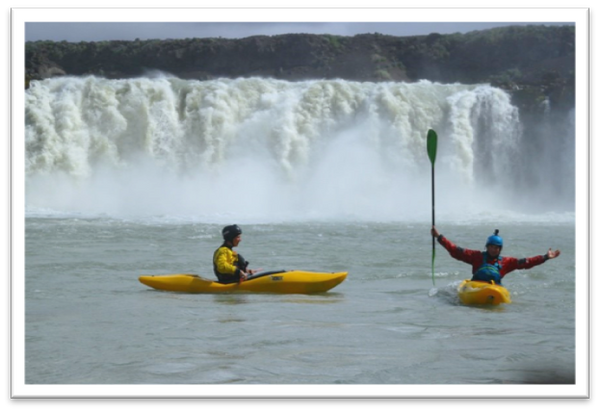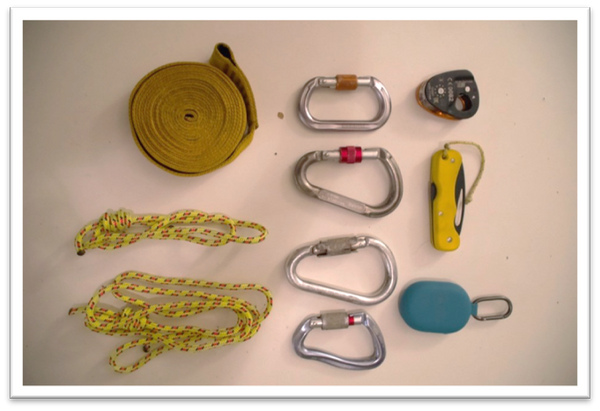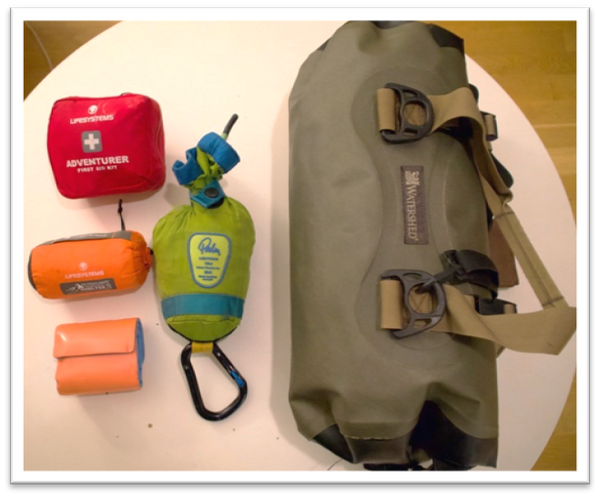My name is Nick Pearce, I´ve been kayaking for 16 years and the last 8 years with the Zet UK team, also working for 7 years as a raft guide. These days I´m living in Norway but have been paddling around the world starting in the south of England and including trips to India, Chile and Iceland amongst many others.

Below I take a look at what I have in both my buoyancy aid and my kayak for a normal day on the water and try to explain the thought process behind it. Coming from both a kayaking and commercial rafting perspective gives me a slightly different view on this. I now work for Norway’s leading expedition and mountaineering shop allowing me to see new and interesting products coming into the market that can cross over into kayaking.
My Buoyancy Aid (PFD)
Right now, my personal choice of PFD is a Palm FXR. There are plenty of different options on the market, and it is important to try them on for comfort; most importantly, how the functions on the jacket will work for you.

When I’m looking at a new PFD, I will firstly look at the fit, checking it will not impede my range of movement both on and off the water. It is important to remember that you may need to move around fast on the bank. If you intend to paddle whitewater then your choice must include a chest harness. Then what is next important to me is the pockets and features on the vest. Question things like:
- Is it big enough to fit all my rescue equipment in without making it hard to get things out? If the pocket is jammed full then it will make for a difficult situation when trying to get things out in a rescue situation, slowing you down.
- How easy is the access to my knife? In the unlikely event you need a knife, are you able to get at it without thinking?
- Will the pockets get in my way when they are full? There is no point having a vest, that when full of your equipment, then impedes your movement.
- Can I get access to everything with one hand? It is often the case in a rescue situation that you may need to get something out of your vest fast and passable when holding ropes, a boat or a person in the other hand.
Cows tail
These are a bit of a controversial thing to have on the river. For a long time I was against using a cow´s tail but then, after being involved in a rescue without one, I realised that having one would have made everything a lot simpler. I have since changed my views and here is why:
- I can attach myself and check for a live-bait rescue.
- Being able to clip a shoulder strap of an unconscious person or a boat for towing
- Can clip myself onto a rope for vertical extraction or stabilisation
However, there are a few golden rules that you must follow:
- You must be attached on a releasable rescue harness and the carabiner on the end must be attached to the vest on a reliable point; never on the shoulder strap or an adjusting strap for the vest. This then means that the system cannot be 100% releasable.
- The carabiner must be a locking carabiner, preferably some type of auto lock so the carabiner can’t clip itself to anything else by accident, like the Palm Autolock Karabiner.
- The cow´s tail must pack into a pocket or sit tight to the body so as not to create a large snag hazard
I always have one on my vest as often you end up with people on different sides of the river. It is perfect for attracting others’ attention so you can then communicate.
What is in the PFD and how is it packed
What to put in your PFD is a hard balance as you want everything you need for a rescue but not too much and don’t want to add too much weight to the thing designed to keep you afloat.

Sling: One long open sling, a minimum of 5 metres, like the Palm Safety tape. This can be used to make an anchor for a rescue or can also be used for a short rescue line. I prefer to go with an open sling as its more versatile and can be used in a lot more ways than a classic stitched sling.
Prusik: Two prusiks one long and one short for setting up zed drag systems and also for vertical access in canyons.
Carabiners: Four carabiners, a mixture of auto locks and screw gates carabiners. Never any snap or wire gate carabiners. I never carry these as, in stressful situations, it is too easy to use them by mistake and I have never come across a situation where the same job could not be done with a locking carabiner.
Mini traction: one mini traction. For those who don’t know what a mini traction is, it’s a pully with a rope jamming system on it. This is such a simple device that makes setting up a zed drag or a vertical extraction system super-fast and much more efficient and would be my top tip to add to your life jacket after the basics. Check out the link to the Petzl web site. Or click here to see CKS stocked pulleys.
Knife: A simple knife with a locking blade that can be opened with one hand. For me, I prefer to go for one with a serrated blade and a blunt tip. But most important thing is to ensure you keep it clean and sharp so, when you need it, its ready and not full of your last river snack.
Earplugs: With the information available now about cold water ear damage it is a must for me to protect myself and my ears. I personally use Surfears. Check them out on the link below, or for a custom moulded fit I know Canoe and Kayak Store work closely with Surfplugs at all their events.
Phone: Always have it with you on your person. Never in your boat as you don’t know when you might swim and get separated from your boat or group and find yourself needing communication. Always ensure you have it in a small waterproof phone pouch, from a brand you know you can trust like Overboard.
Food: Normally for a me just a few muesli bars to keep me going through the day. Anything more can go in the bag as you are never sure when a 2-hour trip turns into a 5 hour day on the water!
What is in my boat
I always try to keep my boat light, with the minimal equipment, but at the same time cover all the situations that may arise.

First aid kit: Keep it simple and topped up with the things you know how to use. I could write a whole article on what you put in a first aid kit for kayaking but below are the most basic things to think about.
- Something for absorbing blood. Gauze for open cuts, tampons for noses and 1 big dressing.
- Duct tape can fix so many things
- Tuff cut scissorsto cut off paddling equipment
- Basic drugs for pain relief
- A waterproof bag to store it all in
Sam splint: Such a simple but amazing piece of kit when you need it. This lives with my first aid kit and hopefully I will never have to use it but, I know if I do, I will be so happy I have it.
Emergency shelter: Nowadays they are so small and light there is no reason to not have one with you on the water. They can be used to keep people warm and stable until help arrives or to use as a makeshift stretcher to help evacuate people should the situation need it.
Watershed bag: This is the best thing for keeping all the above in. You need to remember to take it out and dry it after each trip. Look after your kit and your kit will look after you.
Throw bag: Probably the most important piece of your kit. Make sure you have a bag you can throw but at the same time can hold under load. Some of the smaller bags are great for throwing but are like cheese wire on your hands under load, and that is not what you want. I always use the 18m Lightning Throwline from Palm equipment,
Split paddle: One or two for the group and something that works for all both left and right-handed paddles. Do not just not think of yourself if you are carrying it, especially if you regularly paddle in groups where everyone will have a different preference.





Join the discussion 0 Comments